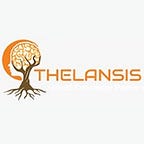Seizures — Market Outlook, Epidemiology, Competitive Landscape, and Market Forecast Report — 2023 To 2033
Seizures can manifest as either provoked or unprovoked occurrences. Provoked seizures, also referred to as acute symptomatic seizures, can be triggered by various factors such as electrolyte disorders, toxins, head injuries, infectious processes, vascular anomalies, tumors, and other mass lesions. The causes of provoked seizures encompass complications associated with nearly any disease process. Common triggers include electrolyte disturbances (hypoglycemia, hyponatremia, hypernatremia, hypocalcemia, among others), acute toxic effects (antidepressants and sympathomimetics), withdrawal syndromes (ethanol and benzodiazepines), irregularities with prescribed antiepileptic medications, sepsis, CNS infections, hypoxic brain injury, traumatic brain injury, stroke (ischemic or hemorrhagic), neoplasms, inflammatory conditions (lupus cerebritis and anti-NMDA receptor encephalitis), fever, and sleep deprivation. Seizures are categorized broadly into focal and generalized seizures, each containing various subtypes. Focal seizures originate in a specific part of the brain, with approximately 60% of individuals with epilepsy experiencing this type. The characterization of these seizures often reflects the brain region involved. On the other hand, generalized seizures result from abnormal neuronal activity rapidly affecting both sides of the brain. They may lead to loss of consciousness, falls, or extensive muscle contractions. Types of generalized seizures and their effects include:
- Absence seizures, characterized by appearing to stare into space with or without slight muscle twitching
- Tonic seizures, causing stiffening of muscles, primarily in the back, legs, and arms
- Clonic seizures, featuring repeated muscle jerking movements on both sides of the body
- Myoclonic seizures, inducing jerks or twitches of the upper body, arms, or legs
- Atonic seizures, resulting in a loss of normal muscle tone, potentially leading to falls or involuntary head dropping
- Tonic-clonic seizures, a combination of symptoms involving body stiffening, repeated jerks of the arms and legs, and loss of consciousness
- Secondary generalized seizures, which initiate in one part of the brain and then spread to both halves (essentially, a focal seizure followed by a generalized seizure)
Benzodiazepines like diazepam, midazolam, or lorazepam are considered first-line medications for ongoing seizures. The prognosis of patients with seizures depends mainly on any underlying causes. Those with seizures stemming from remediable medical or toxicologic issues tend to fare well with appropriate management. In contrast, patients with neoplastic causes or hypoxic brain injury generally have a poorer prognosis compared to those with metabolic causes. The prognosis for an individual experiencing a single unprovoked seizure depends on the absence of an established cause after clinical evaluation.
- Approximately 1 in 100 individuals in the United States has experienced either a single unprovoked seizure or has received a diagnosis of epilepsy.
Thelansis’s “Seizures Market Outlook, Epidemiology, Competitive Landscape, and Market Forecast Report — 2023 To 2033” covers disease overview, epidemiology, drug utilization, prescription share analysis, competitive landscape, clinical practice, regulatory landscape, patient share, market uptake, market forecast, and key market insights under the potential Seizures treatment modalities options for eight major markets (USA, Germany, France, Italy, Spain, UK, Japan, and China).
KOLs insights of Seizures across 8 MM market from the centre of Excellence/ Public/ Private hospitals participated in the study. Insights around current treatment landscape, epidemiology, clinical characteristics, future treatment paradigm, and Unmet needs.
Seizures Market Forecast Patient Based Forecast Model (MS. Excel Based Automated Dashboard), which Data Inputs with sourcing, Market Event, and Product Event, Country specific Forecast Model, Market uptake and patient share uptake, Attribute Analysis, Analog Analysis, Disease burden, and pricing scenario, Summary, and Insights.
Thelansis Competitive Intelligence (CI) practice has been established based on a deep understanding of the pharma/biotech business environment to provide an optimized support system to all levels of the decision-making process. It enables business leaders in forward-thinking and proactive decision-making. Thelansis supports scientific and commercial teams in seamless CI support by creating an AI/ ML-based technology-driven platform that manages the data flow from primary and secondary sources.
